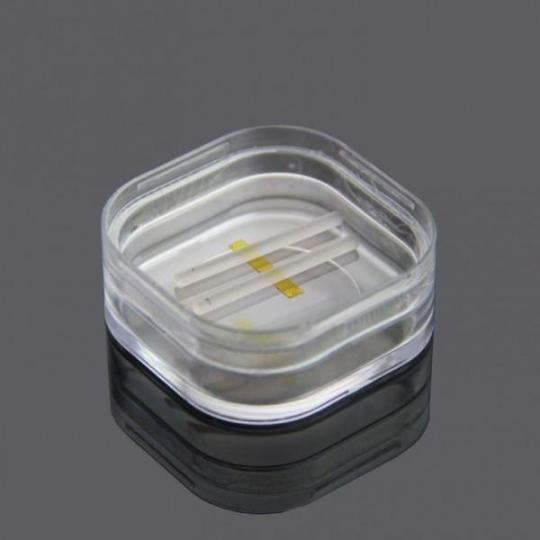Don't wanna be here? Send us removal request.
Text
How BBO Pockels Cells Work

A Pockels cell must be constructed from the right material to produce high-energy laser beams. Transverse and longitudinal cells require transparent electrodes. Transverse Pockels cells require rings electrodes. The voltage requirement can be reduced by lengthening the crystal. Also, the transverse polarization won't work if the crystal is not aligned with the ray direction.
The transverse Pockels cell is made up of two crystals that are oriented in opposite directions. When the voltage is shut off, it produces an unordered wave plate. A Pockels cell may be very capacitive, which means that an electric charge must be applied to the cell, and then removed. This can be problematic in the event that the voltage changes are rapid, since inductance can affect the voltage and may cause resonance phenomena.
A BBO Pockels cell has a wider modulation bandwidth than the conventional CMOS. The BBO is a fantastic material for EO and is especially suitable for high-power systems. It can be used in a high repetition rate and also, its nonlinear optical properties allow it to be used in a wide range of applications. If you're interested in learning more about these devices, here are a few of the specifics laser crylink.
The transverse Pockels cell is made of two identical crystals in opposite orientations. When the voltage is eliminated the cell produces the waveplate of zero order. Due to the dielectric nature of the material, the mechanical alignment isn't a crucial aspect. The axis of the crystal is aligned manually and often without screws. If the crystal is not properly aligned, it could cause misalignment or loss of energy along its length.
Two crystals with opposite orientations form the transverse Pockels cell. When the voltage is shut off the transverse Pockels cell generates an unorderly waveplate. It is not necessary to align the crystal's axis properly mechanically. This is often done without screws. However, misalignment can cause energy to reflect in the wrong direction, which can affect the time delay. It can increase the pulse sensitivity.
The transverse Pockels cell consists of two crystals with opposite orientations. When the voltage is removed from the transverse Pockels cell produces an unordered wave plate. It is not necessary to align the crystal the axis mechanically, since this is typically done manually with screws. It is important to remember that misalignment can reduce the modulation bandwidth, which is a major drawback of the transverse Pockels cell.
The Polarization of Pockels Cells can be controlled with the help of an polarizing prism. If a polarizer's polarization is reversed, the opposite one will be able to absorb light. Polarizers are an essential component of quantum technology. Its efficiency is determined by the number of crystals within the system. The more complicated the IRX Pockels Cell, the more applications it can handle.
1 note
·
View note